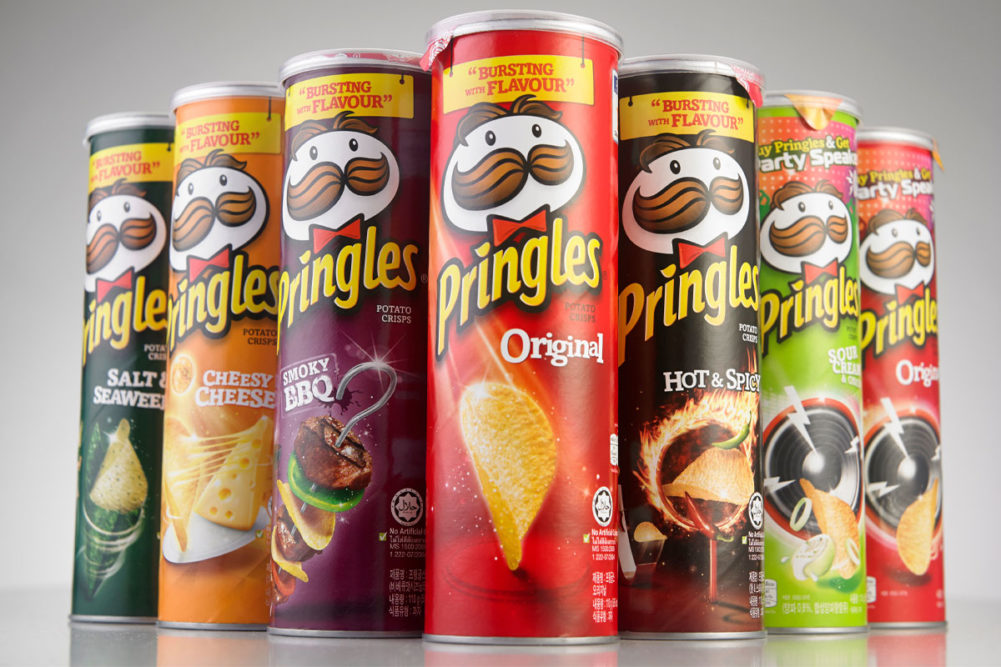BOCA RATON, FLA. — When The Kellogg Co. acquired the Pringles brand from Procter & Gamble for $2.695 billion in 2012, the business generated approximately $1.5 billion in sales and was described by Kellogg executives as a “game changer internationally” offering a “world-class manufacturing and supply chain” and “platform for future innovation.” Today, Pringles generates more than $3 billion in annual sales and has its sights set on a $4 billion milestone.
In the words of David Lawlor, senior vice president of Kellanova and president of Kellanova Europe, the “Pringles playbook” is working.
In a Feb. 21 presentation at the Consumer Analyst Group of New York conference in Boca Raton, Lawlor spoke at length about the Pringles business and how the opportunities for continued growth are numerous.
“Since acquiring the Pringles brand, the business has more than doubled,” Lawlor said. “Net sales for the brand now top $3 billion … and the rate of growth has accelerated. If you look at the cycles here from low single digit, during our integration years, and mid-single-digit pre-pandemic, and more recently, double-digit growth rates.
“To the extent that a $4 billion milestone is now very much in our sights and that did not happen by accident. We’ve made intentional choices to invest in fueling that growth through brand building and innovation through distribution and the capacity to create that growth momentum.”
One of the things that makes Pringles’ growth exciting is the fact growth momentum is broad-based, Lawlor said.
“Many of you here in this audience probably think of the brand as a very US-centric equity,” he said. “But it is truly a global brand. In fact, the European business … is bigger than our US business. … our businesses in AMEA and Latin America are growing double digit and just getting started.
“In fact, our emerging markets business for Pringles … has grown from 14% of sales to 29% currently.”
Lawlor identified five drivers behind Pringles’ playbook for success: its status as an iconic brand with distinctive brand assets; elevated commercial prioritization; innovation; evolved global supply chain; and geographic expansion.
The brand’s distinctive features include the Mr. P mascot, a recognizable can, and, of course, the chips themselves, which Lawlor described as “distinctive, hard and expensive to replicate, flavor friendly” with a “hyperbolic paraboloid shape.”
Lawlor also described Pringles as “an innovator’s dream.”
“The brand promise core consumption occasion and its unique shape make it flavor friendly,” he said. “So, while our sales are typically anchored around the two core flavors that you’d recognize — salted red, sour cream and onion green — our ancillary flavors tend to differ by region and by market. And that’s why you may come across local flavors like (corn) in certain Asian markets or ketchup north of here in Canada.
“We’ve had great success in AMEA, for example, working with celebrity and Michelin star chefs. Most recently, for example, we co-created Tangy Tomato Twist in India, a winning flavor developing collaboration with local celebrity chef Ranveer Brar. This ability to adapt to local taste is one of the things that makes the brand so much fun and make future penetration so attractive and so doable.”
In the United States, recent innovation includes an everything bagel variety as well as a Harvest Blends line.
As Pringles’ sales have risen so has the need for more capacity. At the time of Kellogg Co.’s acquisition of the brand in 2012, there were two facilities dedicated to Pringles production: Jackson, Tenn., and Mechelen, Belgium. In addition to capacity upgrades in Tennessee and Belgium, Lawlor said new Pringles plants have been built in San Lorenzo, Brazil; Kutno, Poland; and Enstek, Malaysia, over the past decade. And with an increase in demand for Pringles outpacing supply in Latin America and Asia, Kellanova has broken ground on new greenfield sites in Mexico and Thailand, he said.
“Our proximity now to key growth markets in the Americas, Europe, Middle East, Asia and Africa only strengthens the brand’s growth credentials, enabling us to expand distribution and unlock more pack formats, for more price points, occasions and channels and all with an ever more agile network capability and reach,” Lawlor said.
Going forward, Lawlor said Kellanova will seek to extend the Pringles brand across economically accretive occasions and channels.
“Our recent decade of growth was largely built off a single traditional can format,” Lawlor said, but he added that the company sees “much untapped potential” once it unlocks additional packaging formats for immediate consumption. Examples include single-serve, multipacks, large sharing and gifting options, he said.




